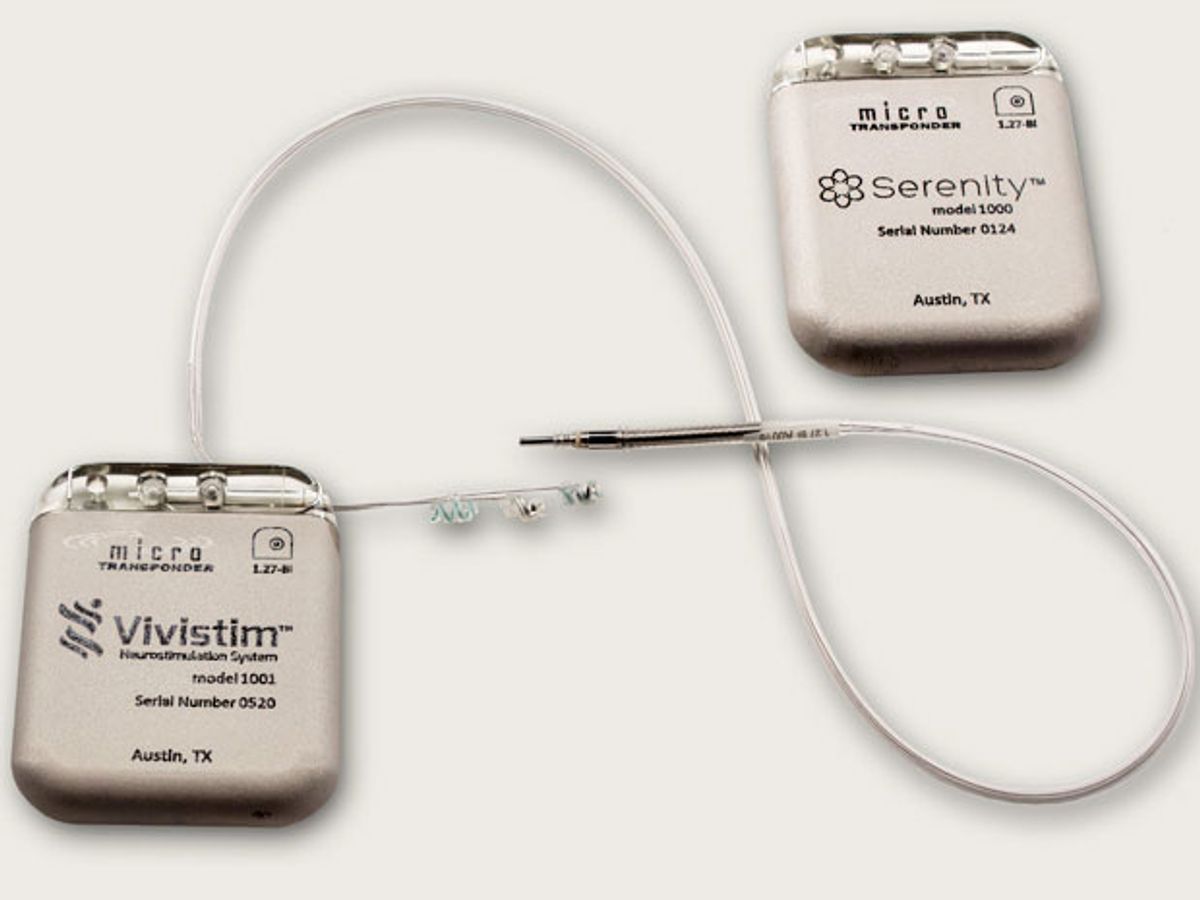Houston-based Microtransponder is using an implanted vagus-nerve simulator to turbocharge one of the brain’s most fundamental functions: learning. “What we’re doing with our VNS pairing therapy is trying to reorganize the brain,” says the company’s R&D director, Navzer Engineer.
Vagus nerve stimulation (VNS) involves a device, usually implanted in the body, that sends electric signals up into the brain from a nerve in the neck. Many of the organizations pursuing vagus-nerve-based treatments are targeting the brain’s centers that release neurotransmitters to treat conditions as various as epilepsy, migraine headache, and heart failure. The vagus links to a deep-brain structures, such as the nucleus basalis and the locus coeruleus, which are stuffed full of neurotransmitters like acetylcholine and norepinephrine—key neurochemicals in the cellular mechanisms of learning and memory. The neurotransmitters tell the brain what to learn and when to learn it, says Engineer. Microtransponder’s system is designed to help the brain learn its way around damage.
The company’s first two targets are stroke and tinnitus. In tinnitus, damage to the inner ear, or cochlea, results in a persistent perceived sound that can be annoying or even downright debilitating. The cochlea is a transducer that’s organized like a piano keyboard, with one end sending signals about low frequency tones to the brain and the other responding to high-pitched sounds. The cochlea connects to the brain’s auditory cortex via a series of relays that are similarly organized as a map of frequencies, and that’s where the real problem is.

If part of the cochlea is damaged, say by years of drumming for Metallica, that section ceases to send information about that pitch to the corresponding part of the brain. In response, the brain’s frequency map changes. Looking for any input it can get, the disconnected part expands to absorb neighboring frequencies—think of one key on a piano expanding to take over the five or six nearest it. In addition, the neurons of the expanded part have a heightened tendency to fire in synchrony—trigger one neuron and the rest will fire up along with it. (This lack of damping is also characteristic of epilepsy and migraine.) The result is the persistent perception of a tone even in the absence of external sound.
Engineer and his coinventor Michael Kilgard’s had an insight, which was to pair vagus nerve stimulation with tones that correspond to the frequencies just above and below the damaged area. The combination disrupts the neural synchrony and squeezes out the expanded part of the map around the tinnitus tone, returning the brain’s inner keyboard to normal.

Microtransponder’s stroke therapy works in a similar way, because—you guessed it—there’s a map in your brain’s motor cortex of your whole body. Ischemic stroke, the kind caused by a blood clot, kills a portion of the brain by starving it of oxygen. If it happens in the motor cortex, the part of the body once controlled by the dead tissue becomes paralyzed—but not always completely. The brain’s motor map is loose enough that a few, weak connections to that body part will exist in other, healthy parts of the brain. In this therapy, movement of the partially paralyzed part is akin to providing the non-tinnitus tones, stimulating the remaining connections in the brain. Pairing vagus nerve stimulation and movement, strengthens those connections, remodeling the brain so that healthy parts can take over for the dead brain tissue.
After years of careful animal studies and human clinical trials, these therapies are close to commercialization. Microtransponder hopes to be cleared by the European Union to start selling the tinnitus therapy there late this year and the stroke therapy in mid-2016. Larger trials, designed to satisfy U.S. regulators’ more statistically-demanding rules, could begin in 2016.
And there are more maladies to tackle by hacking the vagus nerve’s effects on learning, says Frank McEachern, the company’s CEO. Animal studies show it might help the brain learn to ignore the sights or sounds that trigger the terrors of post-traumatic stress disorder, or help extinguish the repetitive behaviors of obsessive-compulsive disorder. One day, it might even help healthy parts of a damaged spinal cord learn to drive limbs lost to paralysis.
Samuel K. Moore is the senior editor at IEEE Spectrum in charge of semiconductors coverage. An IEEE member, he has a bachelor's degree in biomedical engineering from Brown University and a master's degree in journalism from New York University.



